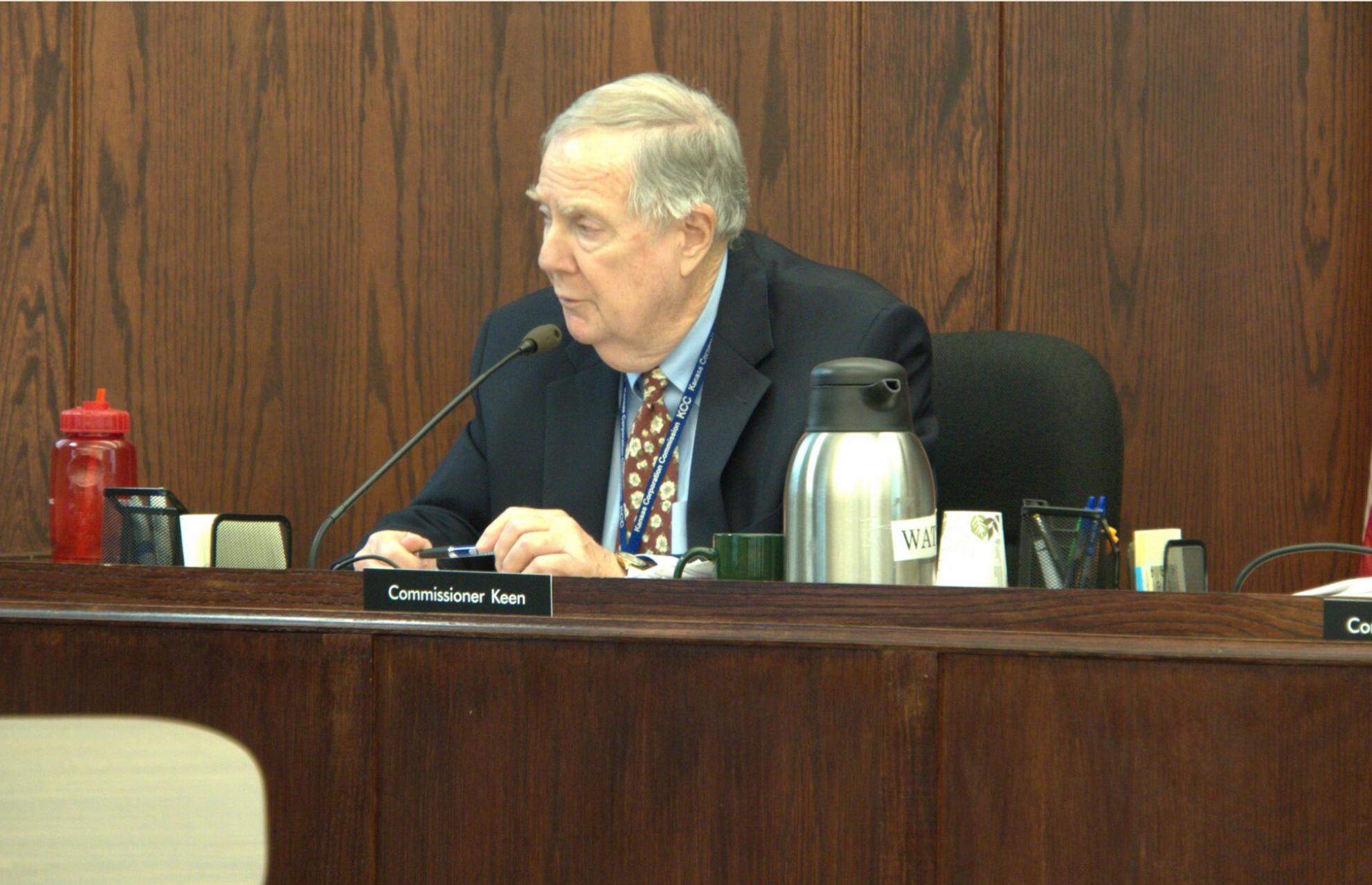
BY MORGAN CHILSON
Kansas Reflector
TOPEKA — Regulators questioned Evergy officials Monday about its rate case, honing in on why the company was willing to accept a $69 million decrease from its initial request.
Evergy had asked the Kansas Corporation Commission for a $197 million base rate increase. Instead, after hours of negotiations with KCC staff, attorneys for industrial consumers, the Citizens’ Utility Ratepayer Board and others, they agreed to a $128 million increase.
The unanimous settlement agreement increases residential base rates by 9.6%, which will bump an average homeowner’s bill by about $9 per month.
Darrin Ives, Evergy vice president for regulatory affairs, said much of the difference in the two amounts is attributed to a lower return on equity and changes to capital structure. Capital structure affects how the utility finances and manages its operations.
Evergy asked for a 10.5% return on equity for investors and settled at 9.7%, Ives said, calling it a “significant move.” Evergy ROE currently is set at 9.4% by the commission.
“It may be a little bit low from our view of a peer utility perspective, but it certainly is within the range of reasonableness and within a range that we feel comfortable that we can tell our investors that Kansas is supportive of continued investment and continued economic development in the state,” he said.
Ives said the settlement agreement was “moderate to slightly below average” compared to peer states and utilities.
Other Midwest utilities, such as Ameren and Xcel Energy, reported return on equities of more than 10%, according to data on Macrotrends.
Panasonic allocations
Panasonic’s new $4 billion battery plant in De Soto is a new customer on Evergy’s grid that has the potential to bring in large revenue increases over time. In the settlement agreement, Evergy and KCC staff had opposing views on how to share those revenues between investors and ratepayers, Ives said.
Commissioner Dwight Keen asked Ives to explain his willingness to agree to a completely different outcome than Ives expressed in prefiled testimony.
The issue was whether the company would keep 100% of the Panasonic revenue increases between rate cases. Ives said he felt that should be the case, as Evergy is responsible for all costs between cases.
Staff took the opposite viewpoint, and parties to the settlement agreement compromised. If Evergy, between this current rate case and the next, reached the 9.7% ROE, then 50% of Panasonic’s revenue would be shared back to consumers.
Keen noted that ensuring fairness between investors and ratepayers is important work of KCC.
“The balancing proposition we have is between making sure that the monopolies, the utilities, we regulate can derive a fair rate of return, on the one hand,” he said. “We have to balance that against the affordability to the ratepayers.”
Panasonic production
Commissioner Andrew French questioned Ives “out of curiosity” about media reports that Panasonic would not achieve full production on its original schedule. He said a Bloomberg interview with Panasonic North American president Megan Myungwon Lee indicated that was misinformation and that the plant would be at full production by the end of the year.
Panasonic spokeswoman Alison Klooster, responding to a Kansas Reflector inquiry, said in an email the company would not be at full production by the end of the year.
“Megan Lee was referring to De Soto getting to the point of full mass production this year, meaning that the lines that are currently operational will reach that point of full mass production,” Klooster said. “She was not referring to the current maximum planned production capacity of the entire facility.”
In response to questions whether the company still planned to meet its full production capacity by the original date of spring 2027, she said the company is excited to have begun production.
“It has always been our plan to grow our North American business in a sustainable manner within the market,” she said. “We have seen 11% growth in U.S. electric vehicle sales in Q1 this year compared with last year, and we are carefully assessing demand trends to expand production capacity while responding to the needs and requests of our customers.
KCC will make a decision on the rate case by Sept. 29.





